Day 2 of a two day Spring Tour over the Easter weekend. After more rain overnight, it was meant to stop in the early hours and then brighten up this morning. It was a bit slow coming, remaining stubbornly cold, grey and misty until midday, but at least it was mostly dry, just spitting with rain from time to time. Then the sun came out early afternoon, which made for a very welcome change, and we were quick to capitalise on it!
Our first destination for the morning was Santon Downham. As we walked down to the bridge from the Forestry Commission car park, we could hear Bramblings wheezing in the trees and we managed to find a couple around the garden with the feeders.
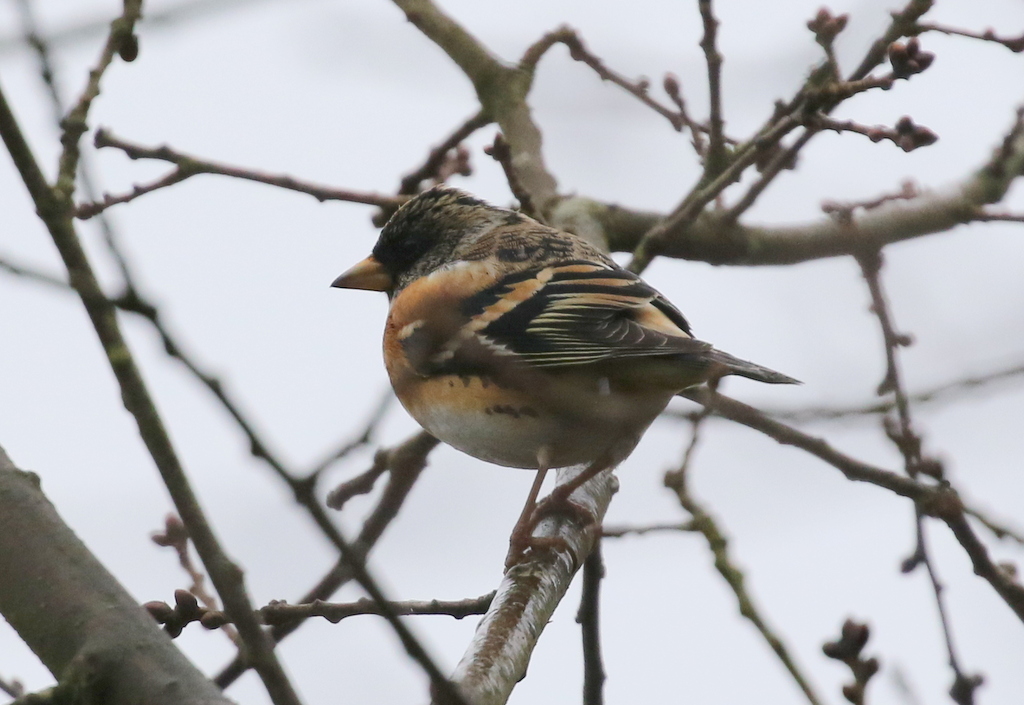
We took the new path down beside the river. A Green Woodpecker laughed at us from somewhere in the distance and a Nuthatch was piping high in the poplars. A Grey Wagtail was singing quietly around one of the tree trunks in the middle of the water. We watched as it fed around the piles of vegetation washed up around the branches, before it flew off back towards the bridge.
Their squeaky calls announced the arrival of a pair of Mandarin Ducks, which flew towards us along the river. They gained height and landed in the branches of the poplar tree just opposite us, on the other bank. There seems to be a very good number of them along the river this year and we were never far away from a pair all morning, mostly to be heard flying up and down the river and through the trees.
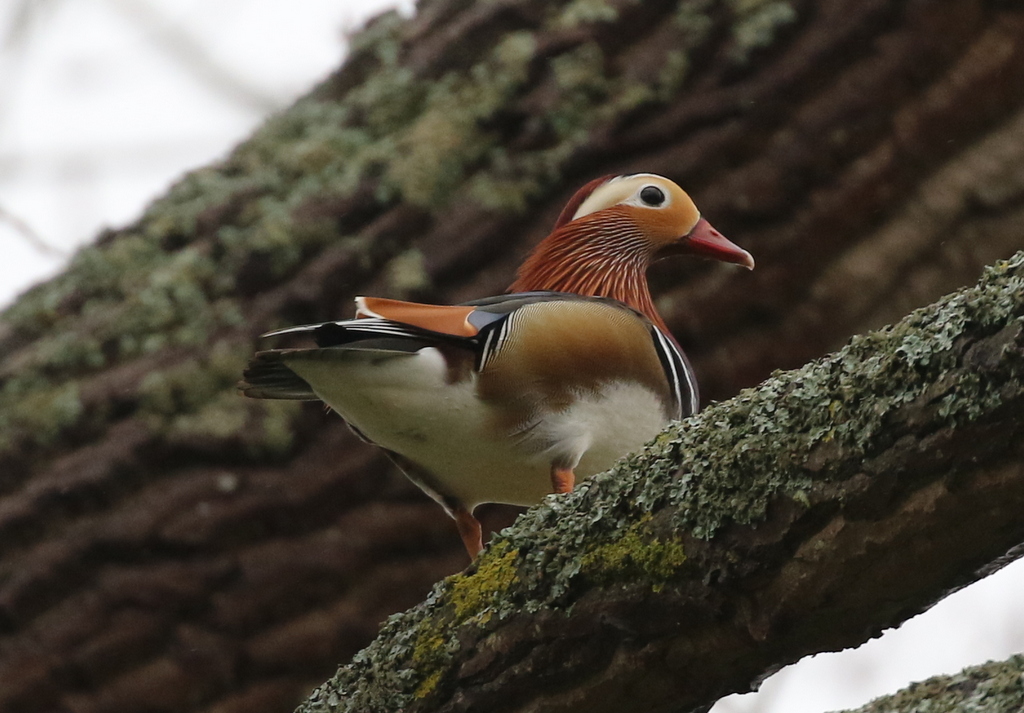
Carrying on down the path, we could hear Redwings chattering and singing in the alders across the river and looked across to see lots of them perched in the tops of the trees. A female Siskin was trying to come down to the ditch beside the path to drink or bathe, and kept flying further along ahead of us, until we got to the corner where it stopped and we could have a closer look at it. There were several Long-tailed Tits along here too and we could hear a couple of Marsh Tits singing from the other side.
Our real target here was Lesser Spotted Woodpecker, but as we got to one of their favoured areas all seemed very quiet. We stood and listened for a while, as we scanned the trees, but not even the Great Spotted Woodpeckers were up to anything this morning. In the cold and damp, nothing was singing and there were generally few birds in the poplars.
We continued on a little further and stopped again. Three Grey Wagtails flew past us, heading downstream, one of the males singing as they passed and a little while later they came back the other way. One of the males then returned alone and stopped to sing on one of the fallen trees lying across the river close by – possibly he had been chasing off a rival pair which had entered his territory. A Kingfisher flew in and perched on the fallen tree too, for a minute, before zooming off upstream in a flash of electric blue.
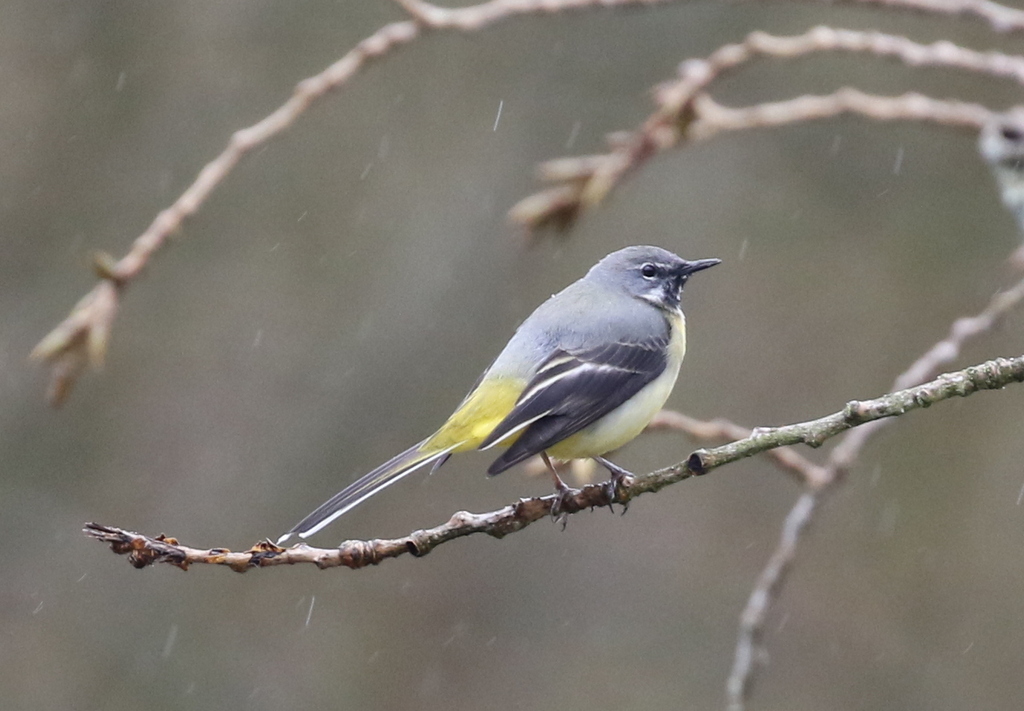
Eventually a couple of Great Spotted Woodpeckers appeared. The first was silent, and flew off over our heads and across the river, but it was quickly followed by a second which called as it landed in the poplars and stayed for a minute before flying off. There was still no sign of the promised brighter intervals!
We were about to give up when we heard too brief bursts of drumming, the distinctive faster, longer drum of a Lesser Spotted Woodpecker. It was coming from somewhere back along the path, though we couldn’t tell which side the river. By the time we got back to where we thought it might have been along the path, which was muddy again and slippery from all the rain, it had gone quiet once more. We waited a while to see if it would do anything again, but it was clear we weren’t going to get much of a performance given the weather this morning, so we headed back.
On the walk back along the path, a Yellowhammer was calling from over by the railway line and we got it in the scope, a smart male. Another pair of Yellowhammers were on the ground under the feeders back in the garden by the bridge.
We paid a brief visit to St Helens picnic site to see if we could find the Woodlarks there, but the field next to the car park was empty today. A Grey Wagtail was singing down by the river, we heard another pair of Mandarin Ducks, and there were large numbers of Redwings in the poplars across the river here.
It seemed to be drying out a bit and the darker grey clouds appeared to have lifted a touch, so we decided it was possibly our best chance of finding a Goshawk now. We could also eat lunch while we waited. We were encouraged by the sight of several Common Buzzards starting to circle up as we arrived and then a Goshawk appeared low above the trees. Unfortunately it dropped quickly back behind the treeline, before everyone to get onto it. Very frustrating – would that be it?
Thankfully, as we were scanning the trees to see if it would reappear, one of the group noticed a raptor high overhead and we watched as an adult Goshawk flew across in front of us. It started to display, flying with slow, deep, deliberate wingbeats, then stopped to circle for a few minutes away to our left, before dropping away behind the trees.
The weather continued to improve as we ate our lunch – some patches of blue sky appeared and we could even finally feel a bit of warmth from the sun. We were then treated to an impressive performance from the Goshawks. First, what was presumably the same bird we had just been watching reappeared, circling up with a second Goshawk away to our left. They both appeared to be adults, and we watched as they started to display and chased each other back behind the trees. Then we picked up a different adult Goshawk, away to our right, which circled up and had a brief tussle with a couple of Common Buzzards.
Next, we spotted two more Goshawks displaying away in the distance – this time one of them was a juvenile, orange-tinged below and brown above as it turned in the sun. It appeared to be a big bird, presumably a female, and it chased after the adult which was with it.
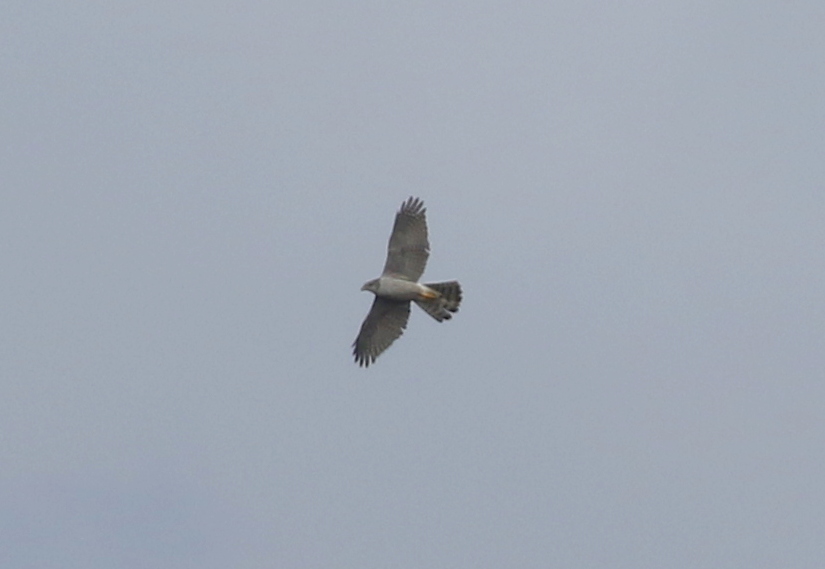
Unfortunately we only caught the back end of one of the Goshawks as it dropped down into the trees right in front of us, but helpfully it circled back up after a few minutes, giving us our best views of all, before it flew off away from us. We thought it was the same bird which we noticed circling further back a few minutes later, but through the scope we could see that this one was a juvenile, possibly a young male, with gaps in its wings, so different from the juvenile we had seen earlier.
There were other birds to distract us here too, when we weren’t watching the Goshawks. A Red Kite circled lazily behind us and a Sparrowhawk flew up from the trees, with bursts of rapid flapping, very different from the Goshawks. A Curlew called a couple of times and then burst into its delightful bubbling song as it circled down into the grass behind us. There were several Skylarks singing constantly now, but then a Woodlark flew in overhead calling and dropped down into the grass too, where we could get it in the scope.
It was a really impressive display from the Goshawks today, and far better than we could have dreamt of in the cold and damp weather this morning. After lunch, we decided to head off and try our luck elsewhere. With the sun shining now, we figured the Willow Tits might start singing and we were quickly rewarded. As we walked into the plantation with the feeding tables, one started singing almost immediately.
We followed the song, as we thought it might come out on the sunny edge of the trees, but the Willow Tit moved deeper into the plantation. We could hear it singing and occasionally calling too. Then it went quiet. We walked back to the feeding tables, figuring it might do a circuit, and watched all the commoner tits and Nuthatches coming in to the seeds. A Marsh Tit put in an appearance too.
When the Willow Tit started singing again, it sounded like it was heading slowly back towards us, so we watched the edge of trees hoping it would come out. Then it went quiet for a minute and the next thing it started up again on the other side of the track, behind the second feeding table. It carried on singing but was moving deeper into the plantation away from us again.
The plan was to spend the afternoon at Lynford Arboretum, so we headed over there next. As we walked in along the track, there were a few tits and a Nuthatch coming to the fat balls in the cage in front of the gate. A few Chaffinches were feeding on the ground and a Marsh Tit dropped in briefly too.
The Hawfinches have been seen most reliably in the paddocks in the last few weeks, so we decided to make our way straight down there. Down at the bottom of the hill, before we got to the bridge, we heard Goldcrests calling and looked up in the top of a couple of tall fir trees to see them flycatching, after lots of small midges buzzing around the branches.
There was a sharper call too and then a Firecrest started singing from the deciduous trees behind us. We had a great view of it as it flitted around in the bare branches.
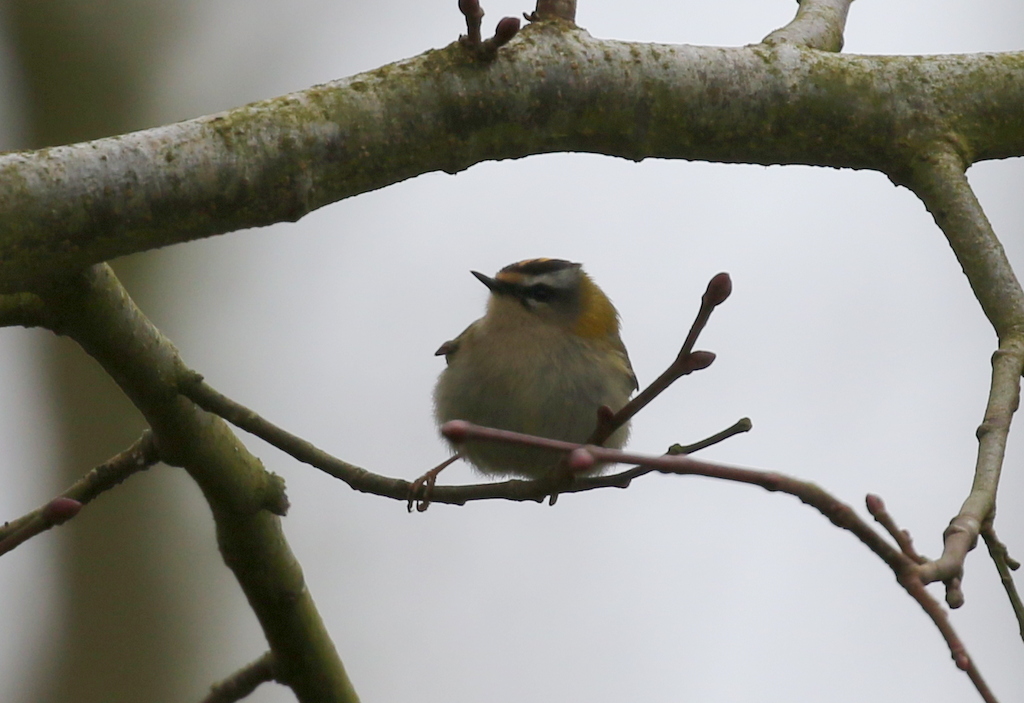
There was not too much seed left out on the pillars of the bridge, although a smart male Reed Bunting was feeding on one. We added a couple of generous handfuls of sunflower seeds and then continued on down towards the paddocks, figuring we would come back and see what was coming in to the seed on our way back.
When we stopped at a gap in the hedge to scan the paddocks, we could see lots of Redwings down in the grass. Something spooked them and they flew up into the trees out in the middle. Scanning through the tops, a Hawfinch appeared with them, in the top of one of the hornbeams. It was a smart male, rich chestnut coloured and with a neat black mask and bib. We got it in the scope and admired it massive cherry stone-crusher of a bill.

After we had all had a really good look at it, the Hawfinch eventually dropped back down towards the ground under the biggest clump of trees. The Redwings were mostly down here too and, scanning through, we could see several Chaffinches and a smart male Brambling too. A Treecreeper appeared on one of the trunks in amongst them.
When something spooked all the Redwings again, they flew off towards the Arboretum. We expected to find the Hawfinch up in the trees again, but there was no sign of it this time. Perhaps it was still hiding somewhere on the ground. We decided to walk back.
There was very little on the lake today – although a couple of Little Grebes laughed maniacally at us from the reeds – so we headed back to the bridge. As we stood and watched, a steady succession of tits came in to the sunflower seeds we had put out earlier. We had great close views of the Marsh Tits here in particular.
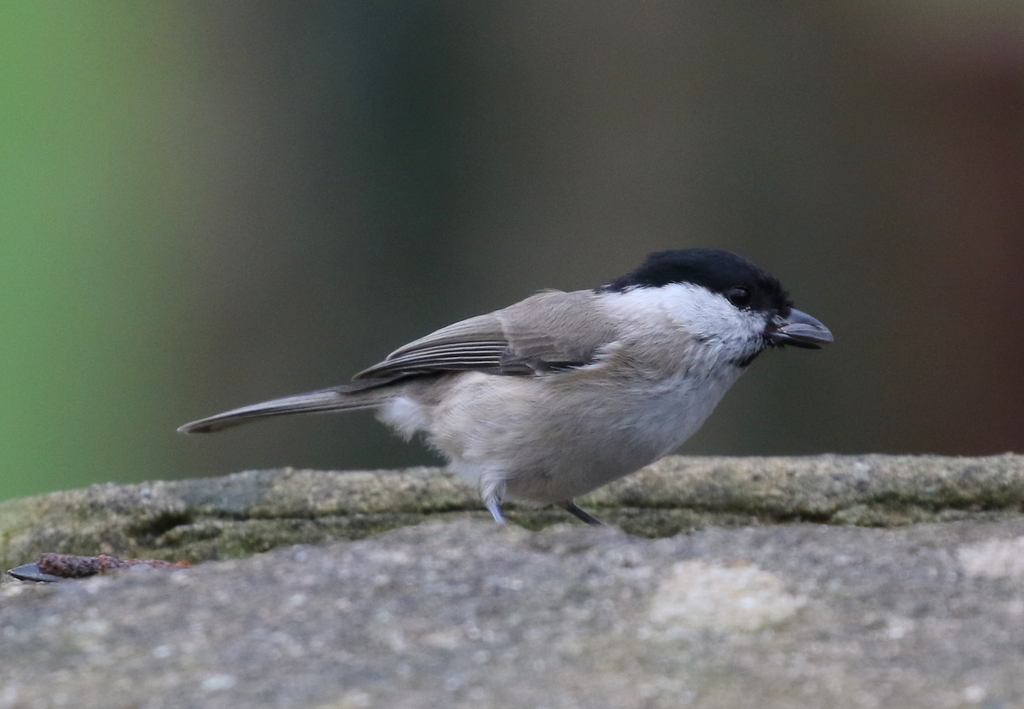
There were two or three Nuthatches coming in and out here too – always great birds to watch and nice to see them up close.
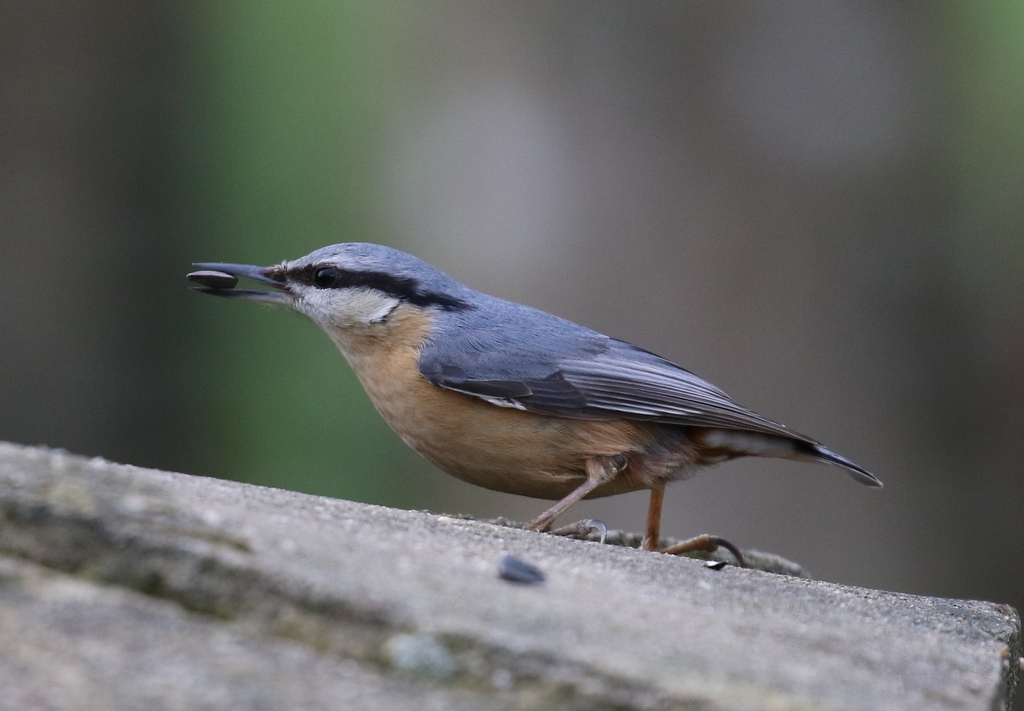
There was still one last thing we wanted to try to do this afternoon, so we made our way back to the car. We wanted to try to find a Stone Curlew, so we headed over to an area where we have seen some in recent days. We had a quick look in some pig fields first – which produced a couple of Oystercatchers, a few Shelduck and a group of Lesser Black-backed Gulls. The Stone Curlews were in here late in the afternoon last week, but not today.
Then we went to look in another field where the Stone Curlews can sometimes be found. There was no sign of them here either at first, just a couple of Red-legged Partridges. But scanning really carefully, we spotted the top of a head just poking out in some stubble. We got the scope on it and eventually the head of a Stone Curlew appeared. We could see its bright yellow iris when it opened its eye and its black-tipped yellow bill.
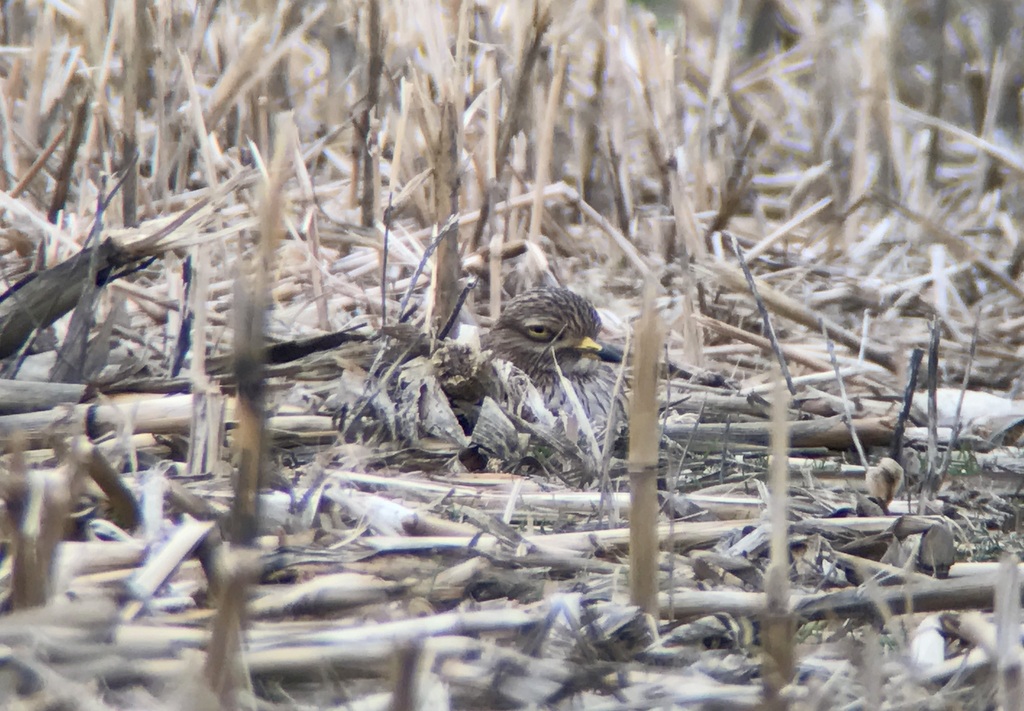
The Stone Curlew was incredibly well camouflaged, perfectly coloured against the faded yellows and browns of the stubble. Until it moved, it was almost impossible to see. Then we realised there was a second Stone Curlew nearby when it moved! After watching them for while, it was time to head for home.
It was a wonderful way to end the tour, watching the two Stone Curlews. Looking back, we had enjoyed some great birds over the two days we were out together. The weather hadn’t made it easy at times, but it just goes to show what you can find when you get out and look!
















